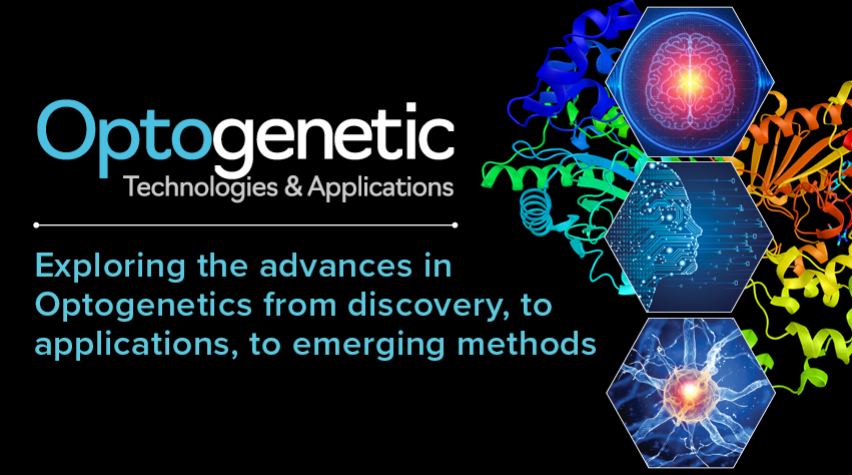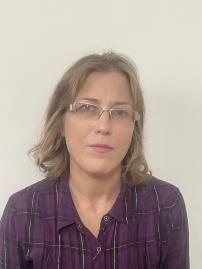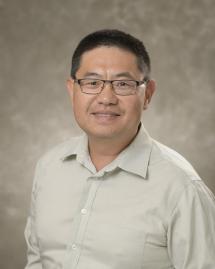
Optogenetics technology is an emerging tool for researchers to control cellular function. Over the past several years, it has had a strong impact in a variety of applications, including but not limited to: cell signaling and dynamics, developmental biology, microbial transcription, cancer signaling and drug response, control of T-cell receptor signaling, and materials science.
The 4th Optogenetic Technologies and Applications Conference, organized by the Society for Biological Engineering (SBE), will bring together communities of researchers who are both working in optogenetics or who stand to benefit from utilizing optogenetic tools for various biological applications. This conference provides unique value to realizing the potential of the field across a variety of disciplines.
We recently spoke with four of the conference’s featured speakers: Mustafa Khammash, Professor at ETH Zürich; John Rogers, Professor at Northwestern University; Daria Shcherbakov, Research Assistant Professor at the Albert Einstein College of Medicine; and Kai Zhang, Associate Professor at the University of Illinois at Urbana-Champaign. These speakers discuss what inspired them to conduct research in the field, the extensive benefits of optogenetics, and exciting future advancements.
What inspired you to do research in this field?
Mustafa: I was inspired to do research in this field by the challenge of controlling living cells in real time. Light offered a powerful tool to dynamically manipulate cellular processes with precision, allowing for highly specific spatio-temporal control. This approach opened up endless possibilities for developing advanced feedback control systems to regulate cellular behavior and functions.
John: We are motivated to develop new neuroengineering platforms for neuroscience research in animal models and, in the future, for use in addressing human conditions.
Daria: My research was inspired by the possibility to create precisely controlled molecules, cells, and organisms. This process involves all aspects of multidisciplinary research, from chemistry of molecules to biomedical applications. Research in this field extends beyond optogenetics; it’s helpful for a wide audience of researchers in different fields. Lastly, the potential for biomedical applications.
Kai: I am amazed at how optogenetics utilizes the spatial and temporal resolution of light to control molecular activities and mediate molecular interactions in live cells. This modality generates almost infinite possibilities for precise cell function control. As a researcher trained in physical sciences, I am excited to have the opportunity to leverage a traditionally observational tool, for example, an optical microscope, as a manipulation tool for biological sciences.
How do you envision this field solving some of the challenges in engineering and society?
Mustafa: By providing exquisite tools to probe biological processes, optogenetics facilitates a deeper understanding of endogenous functions. From a forward engineering perspective, it enables new ways to control living cells with robustness and precision, opening up exciting opportunities for industrial and medical applications.
John: Research in neuroengineering is essential to the development of new therapies and diagnostics for brain disorders.
Daria: Precise control of molecules and cells with light should help in both research and biomedical applications. It can also lead to new sources of bio-materials for engineering if optogenetics is used in bacterial or mammalian cell “factories.” Additionally, with advancements in genetic therapies, biomedical applications of optogenetics seem to be within reach. As light allows precise control of biological processes, controlled “manufacturing” of cells and even organs for use in modern medicine seems to be possible in the not-so-distant future.
Kai: I think the field needs to demonstrate real promise for clinical research in human applications. This requires significant improvement in both engineering (hardware, user interface and control) and a fundamental understanding of biology to improve the efficacy of the optogenetic platform.
Are there any new developments, technologies, or applications of technologies in this field that you are particularly excited about?
John: Ultraminiaturized devices that can operate individually or in wireless networks will open up new opportunities in neuroscience research, particularly in small animal models. These same technologies have potential for human translation.
Daria: Optogenetic applications in immunotherapy, optogenetic applications in control of metabolism in animals, optogenetic control of endogenous molecules, and high throughput screening and applications of AI in optogenetic tool development.
Kai: I am excited about how optogenetics can be integrated into drug screening, neuronal communication, novel materials development, and synthetic cell functions.
What are you hoping the audience takes away from this conference?
Daria: After attending the 4th Optogenetic Technologies and Applications Conference, I’m hoping the audience will walk away with new ideas, new connections, an understanding of where we are and where the field is moving, and information about the arsenal of available optogenetic tools and guides on how to choose appropriate ones in research.
Kai: I hope the audience can find the essence of optogenetics and think of new ways of utilizing optogenetics in their own field of research, e.g., in material sciences, biomedical, fundamental biology, and engineering.
The 4th Optogenetic Technologies and Applications Conference will be held in Boston, MA, September 10–12, 2024. Learn more and register today.
Funding is available to help sponsor some registrations and travel costs. Students/post-docs and early-career professionals are encouraged to apply here. This grant is made possible by the AIChE® Foundation and other generous supporting organizations.

Mustafa Khammash
Dr. Khammash is Professor of Control Theory and Systems Biology in the Department of Biosystems Science and Engineering (D-BSSE) at ETH-Zurich. He works at the interface of control theory, systems biology, and synthetic biology. Read more

John Rogers
John Rogers is a Professor at Northwestern University. He has published more than 850 papers and his research has been recognized by many awards, including a MacArthur Fellowship (2009), the Lemelson-MIT Prize (2011), the Smithsonian Award (2013), the Benjamin Franklin Medal (2019) and a Guggenheim Fellowship (2021). Read more

Daria Shcherbakova
Daria Shcherbakova is a Research Assistant Professor at Albert Einstein College of Medicine in the Department of Genetics. Her research focuses on engineering of natural photoreceptors into fluorescent reporters and non-opsin optogenetic tools. Read more

Kai Zhang
Kai Zhang is Associate Professor at the University of Illinois at Urbana-Champaign.
About SBE
Established in 2004, the Society for Biological Engineering is a technological community for engineers and applied scientists integrating biology with engineering. Members of SBE come from a broad spectrum of industries and disciplines and share in SBE’s mission of realizing the benefits of bioprocessing, biomedical and biomolecular applications. Learn more about SBE


